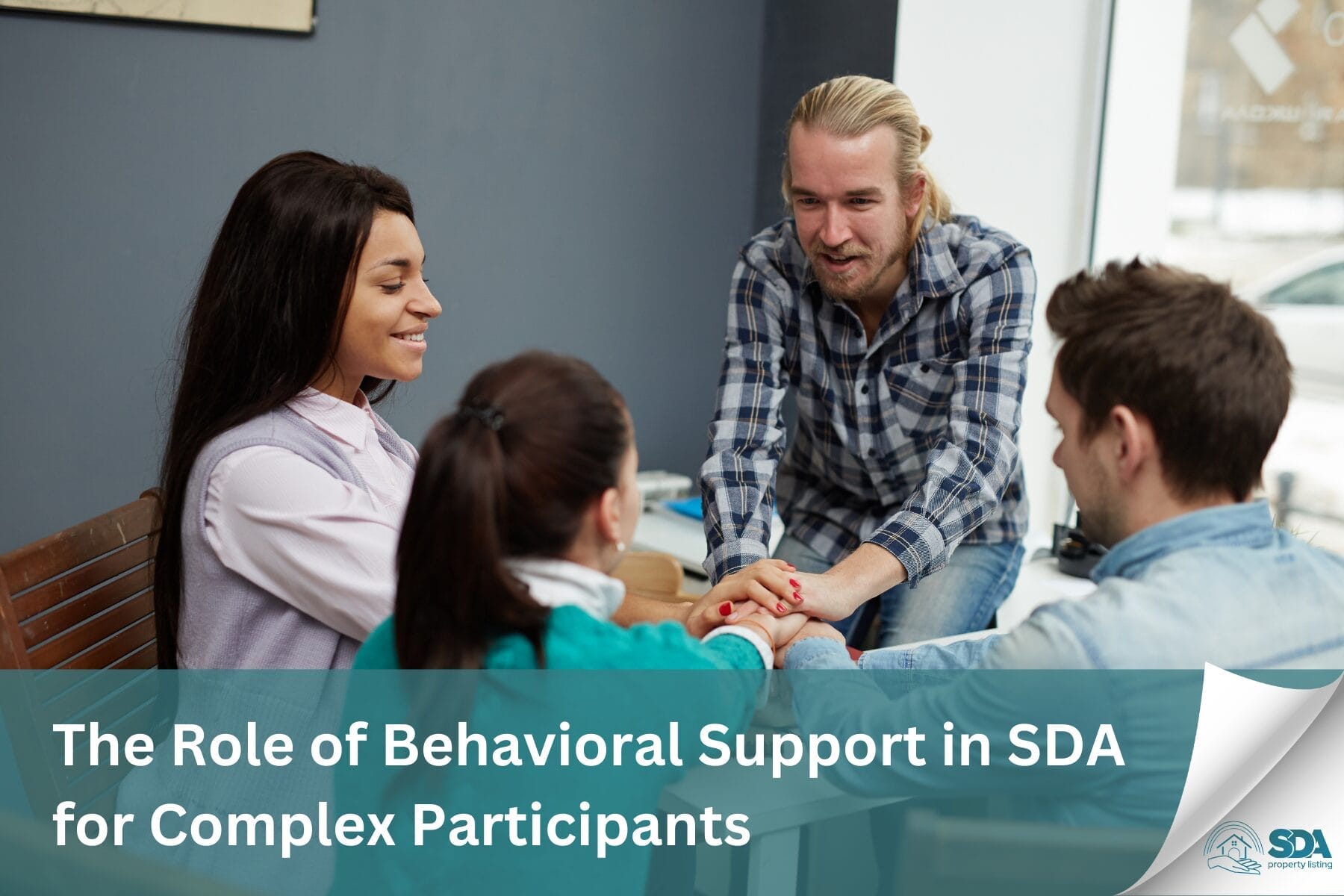
The Role of Behavioral Support in SDA for Complex Participants
Helping people with complex behavioral needs to live in safe and supportive housing involves more than constructing physical infrastructure—it requires care, compassion, and attention to detail. In this article, we will discuss how behavioral support within SDA (Specialist Disability Accommodation) can improve the environments participants live in where they not only feel safe but are able to flourish. If you are a family member of one receiving services, or if you are simply an individual who interacts with someone who receives habilitative care (whether as the provider or their support worker), understanding how behavioral services can differ is paramount to creating a life that scores bright for those under your watch.
Why Behavioral Support Makes SDA Feel Like Home
SDA housing is more than just about a roof and some walls; it requires an atmosphere where people can feel comfortable, safe, and supported. This can be overwhelming for anyone, but in particular for those who are dealing with complex behavioral needs like difficulty in controlling emotions, expressing themselves verbally or by other means of communication, or sensitivity to loud noises; they may find their day-to-day life a challenge.
The role of behavioral support services is more than just a safety net; it contains the tools for managing complex behaviors and generating bonds. Integrated SDA safety solutions empower these services to provide independence, stress reduction, and joy in their everyday routines.
Behavioral Support at the Core of SDA: Change Begins Within The Heart
Developing Cozy, Environmentally friendly Places
We all feel more comfortable in places that are catered to our needs. Supportive housing must mean more than physically accessible; it has to be emotionally accessible as well. A little goes a long way! Opting to change something as simple as the lighting and cutting down on noise can go a long way for those with sensory challenges.
Think of someone who gets easily startled by loud noises. Behavioral input such as soundproofing or quiet zones can make the home feel like a place of peace instead of stress.
The Message Hidden in the Behaviors
Every behavior tells a story. Behavioral support teams should work to figure out what the participants are trying to convey through their actions or behavior. Suppose a participant struggles with anxiety in crowded places and becomes aggressive in response. Provided with support, they can explore new coping mechanisms—it could be deep breathing or using visual cues.
Providers should be able to identify and address triggers, providing a sense of relief for participants where they feel heard and acknowledged while fostering an environment that lessens the need for crisis intervention.
Developing Independence Skills
This process is called behavioral support. These can be the fundamental steps participants need to take to reach a certain level of independence that facilitates developing friends, coping with their feelings, or self-regulating. In an SDA environment, these little accomplishments, such as writing their name or joining in conversation, can be game-changing to these people in need.
Because participants thrive and are empowered with life skills provided by the tools used to enrich their behavioral skills, every new skill acquired is a stepping stone to greater independence and happiness.
How providers can pull this off
Collaborate with Behavior Support Teams
Collaboration is key. Collaborating with the participants’ behavioral specialists, caregivers, and providers, ensuring that the participants’ behavior plans are in line with every residential environment. Supporting the well-being of all participants. One day at a time, united as one team.
Personalize the Support
This means that the solution must be tailored to fit their requirements, as not every participant is alike. There is no one-size-fits-all solution for these types of needs. Some common behavioral support strategies are customized routines, relaxation rooms, or even sensory equipment to create feelings of calmness in the home. It’s about listening to their needs and creating spaces that feel like their own.
The final word of advice is to stay on the move.
People evolve with time, and their needs shift. This is why they need to continuously check in on what’s working and not. The reality is that plans are bound to change, and providers should be prepared for this if they intend to ensure their participants feel supported, at ease, and safe throughout the period.
Take the First Step Toward Safer, Supportive Housing.
SDA: The supports within SDA are more than just for behavior—they help people live as full a life as possible. It’s all about when you give it the proper care. Housing is more than a building; it becomes a home where people grow and evolve.
For providers and caregivers, this is the time to do something about creating safer and more inclusive spaces. If you’re a provider or caregiver looking to create safer, more inclusive spaces, now is the time to take action.
Reach out to our experienced behavioral support specialists to see how tailored strategies can transform your SDA services. The right partnership can help you build a more positive future for the participants in your care.
Let’s work together to create homes where everyone belongs.
Contact us now.








